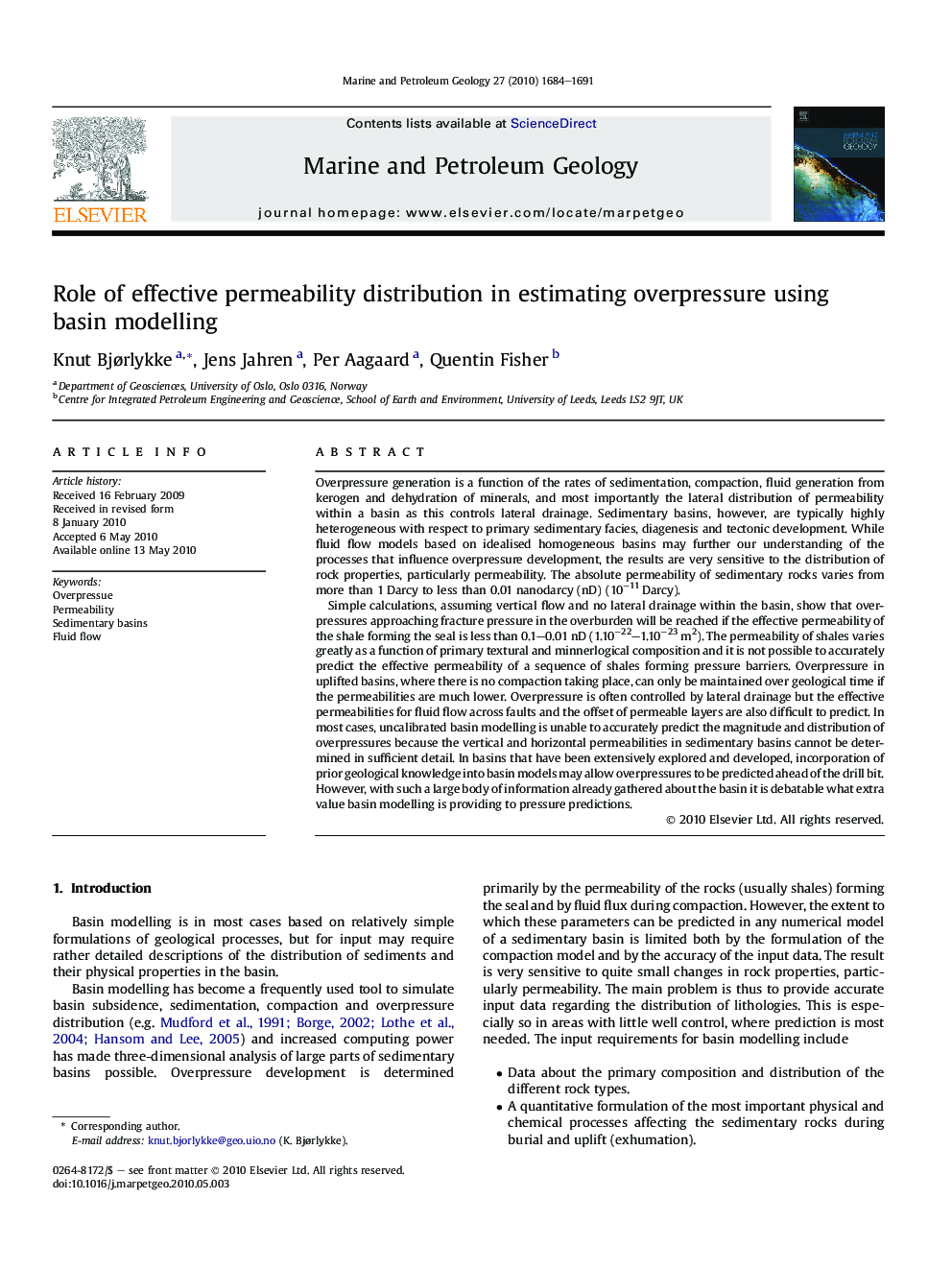| Article ID | Journal | Published Year | Pages | File Type |
|---|---|---|---|---|
| 4696151 | Marine and Petroleum Geology | 2010 | 8 Pages |
Overpressure generation is a function of the rates of sedimentation, compaction, fluid generation from kerogen and dehydration of minerals, and most importantly the lateral distribution of permeability within a basin as this controls lateral drainage. Sedimentary basins, however, are typically highly heterogeneous with respect to primary sedimentary facies, diagenesis and tectonic development. While fluid flow models based on idealised homogeneous basins may further our understanding of the processes that influence overpressure development, the results are very sensitive to the distribution of rock properties, particularly permeability. The absolute permeability of sedimentary rocks varies from more than 1 Darcy to less than 0.01 nanodarcy (nD) (10−11 Darcy).Simple calculations, assuming vertical flow and no lateral drainage within the basin, show that overpressures approaching fracture pressure in the overburden will be reached if the effective permeability of the shale forming the seal is less than 0.1–0.01 nD (1.10−22–1.10−23 m2). The permeability of shales varies greatly as a function of primary textural and minnerlogical composition and it is not possible to accurately predict the effective permeability of a sequence of shales forming pressure barriers. Overpressure in uplifted basins, where there is no compaction taking place, can only be maintained over geological time if the permeabilities are much lower. Overpressure is often controlled by lateral drainage but the effective permeabilities for fluid flow across faults and the offset of permeable layers are also difficult to predict. In most cases, uncalibrated basin modelling is unable to accurately predict the magnitude and distribution of overpressures because the vertical and horizontal permeabilities in sedimentary basins cannot be determined in sufficient detail. In basins that have been extensively explored and developed, incorporation of prior geological knowledge into basin models may allow overpressures to be predicted ahead of the drill bit. However, with such a large body of information already gathered about the basin it is debatable what extra value basin modelling is providing to pressure predictions.
